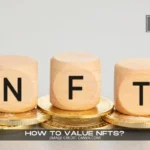Introduction to Risk Investors
When it comes to investing, everyone has a different appetite for risk. Some individuals prefer safe, conservative investments, while others may seek higher returns by taking on greater risk. In this article, we’ll explore the world of risk investors, examining different types, investment strategies, risk management techniques, and investment vehicles suited to various risk profiles. We’ll also discuss how to evaluate and manage investment risks to achieve financial goals.
Table of Contents
Types of Risk Investors
Investors can generally be classified into three categories based on their risk tolerance: conservative, moderate, and aggressive.
For any business enquiry, you can contact us at ArabsGeek.com
For more of such financial articles, Consider visiting our sister website at EntrepreneursPilot.com
Conservative Investors
Conservative investors prioritize capital preservation and typically seek stable, low-risk investments. They are often risk-averse and may have a shorter investment horizon, such as those nearing retirement or needing access to their capital in the near future.
Moderate Investors
Moderate investors have a balanced approach to risk, seeking a combination of capital appreciation and income. They typically have a medium to long-term investment horizon and are willing to take on some risk for higher returns while still maintaining a focus on capital preservation.
Aggressive Investors
Aggressive investors have a high tolerance for risk and aim for maximum capital appreciation. They are typically willing to invest in high-risk, high-reward assets with the potential for significant gains. These investors often have a long-term investment horizon and can withstand the volatility associated with riskier investments.
Risk Tolerance
Understanding one’s risk tolerance is crucial for making appropriate investment decisions and building a suitable portfolio.
Assessing Risk Tolerance
Risk tolerance can be assessed by considering factors such as investment objectives, time horizon, financial situation, and emotional comfort with market fluctuations.
Balancing Risk and Reward
Investors must balance the potential rewards of an investment with the associated risks. Higher risk investments may offer greater returns, but also come with a higher likelihood of loss. Striking the right balance between risk and reward is crucial to achieving long-term financial goals.
Investment Strategies | Risk Investor
Various investment strategies can help risk investors manage their portfolios and achieve their financial objectives.
Diversification
Diversification is the practice of spreading investments across different asset classes, industries, and geographical regions to reduce overall portfolio risk. This helps to minimize the impact of a poor-performing investment on the entire portfolio.
Asset Allocation
Asset allocation involves determining the optimal mix of assets within a portfolio based on an investor’s risk tolerance, investment objectives, and time horizon. A well-balanced portfolio typically includes a mix of stocks, bonds, and cash or cash equivalents.
Dollar-Cost Averaging
Dollar-cost averaging is an investment strategy that involves consistently investing a fixed amount of money at regular intervals, regardless of market conditions. This approach helps to reduce the impact of market fluctuations and can lower the average cost per share over time.
Active vs. Passive Investing
Active investing involves buying and selling individual securities to outperform a benchmark index, while passive investing involves holding a diversified portfolio designed to mirror the performance of a specific index. Passive investing generally has lower fees and may be more appropriate for risk-averse investors, while active investing may offer the potential for higher returns but comes with higher fees and increased risk.
Risk Management Techniques
Risk investors can employ various techniques to manage and mitigate the risks associated with their investments.
Portfolio Rebalancing
Portfolio rebalancing is the process of periodically adjusting a portfolio’s asset allocation to maintain the desired risk level. This may involve selling assets that have increased in value and buying assets that have decreased in value to maintain the original asset allocation.
Stop-Loss Orders | Risk Investor
Stop-loss orders are a tool used by investors to limit their losses on a particular investment. A stop-loss order is placed with a broker to sell a security when it reaches a specified price, preventing further losses if the security continues to decline in value.
Position Sizing
Position sizing involves determining the appropriate amount of a particular investment to hold within a portfolio. Proper position sizing helps to manage risk by preventing overexposure to a single investment or asset class.
Hedging Strategies
Hedging strategies involve taking an offsetting position in a related security to reduce the risk associated with an investment. Common hedging instruments include options, futures, and inverse ETFs.
Investment Vehicles for Risk Investors
Different investment vehicles cater to various risk profiles and investment objectives.
Bonds
Bonds are debt instruments issued by governments or corporations that pay periodic interest and return the principal upon maturity. They generally offer lower risk and more predictable income than stocks but may have lower long-term returns.
Dividend Stocks | Risk Investor
Dividend stocks are shares of companies that pay regular dividends to shareholders. These stocks can provide a reliable income stream and potential capital appreciation, making them suitable for moderate risk investors.
Real Estate Investment Trusts (REITs)
REITs are companies that invest in income-producing real estate properties. They are required to distribute a significant portion of their income to shareholders in the form of dividends, providing a steady income stream and potential capital appreciation.
Mutual Funds and ETFs
Mutual funds and ETFs pool money from multiple investors to purchase a diversified portfolio of stocks, bonds, or other securities. They offer diversification and professional management, making them suitable for a wide range of risk investors.
Options and Futures
Options and futures are financial derivatives that can be used for speculation, hedging, or generating income. These instruments can offer increased flexibility and leverage, but also come with higher risk and complexity, making them more suitable for experienced or aggressive investors.
Evaluating Investment Risks
Before investing, it’s essential to understand the various risks associated with different investments.
Market Risk
Market risk, also known as systematic risk, is the risk that the value of an investment will decline due to factors affecting the overall market or economy. This risk cannot be eliminated through diversification and affects all investments to some degree.
Credit Risk
Credit risk is the risk that a bond issuer will default on its debt obligations, resulting in a loss for the bondholder. Higher credit risk is typically associated with lower credit ratings and higher yields.
Inflation Risk
Inflation risk is the risk that the purchasing power of an investment’s returns will be eroded by rising prices. Fixed-income investments, such as bonds, are particularly susceptible to inflation risk as their interest payments may not keep pace with inflation.
Liquidity Risk
Liquidity risk is the risk that an investor will be unable to sell an investment quickly and at a fair price due to a lack of buyers or sellers in the market. Less liquid investments may experience greater price fluctuations and can be more challenging to sell when needed.
Conclusion | Risk Investor
Risk investors play a vital role in the financial markets, with different types of investors employing various strategies to achieve their financial goals. Understanding risk tolerance, investment strategies, risk management techniques, and the appropriate investment vehicles for each risk profile is essential for anyone looking to navigate the world of investing successfully.
Frequently Asked Questions (FAQs)
Q1: What is the difference between conservative, moderate, and aggressive investors?
Conservative investors prioritize capital preservation and seek low-risk investments, moderate investors have a balanced approach to risk and aim for a mix of capital appreciation and income, while aggressive investors have a high tolerance for risk and seek maximum capital appreciation.
Q2: What is the importance of diversification in managing investment risk?
Diversification helps to reduce overall portfolio risk by spreading investments across different asset classes, industries, and geographical regions, minimizing the impact of a poor-performing investment on the entire portfolio.
Q3: What are some common risk management techniques used by risk investors?
Common risk management techniques include portfolio rebalancing, stop-loss orders, position sizing, and hedging strategies.
Q4: What are some suitable investment vehicles for different risk profiles?
Some examples of investment vehicles for different risk profiles include bonds for conservative investors, dividend stocks and REITs for moderate investors, and options and futures for aggressive investors.
Q5: What are the various risks associated with investments?
Some common investment risks include market risk, credit risk, inflation risk, and liquidity risk. It’s crucial for investors to understand and evaluate these risks before making investment decisions.











